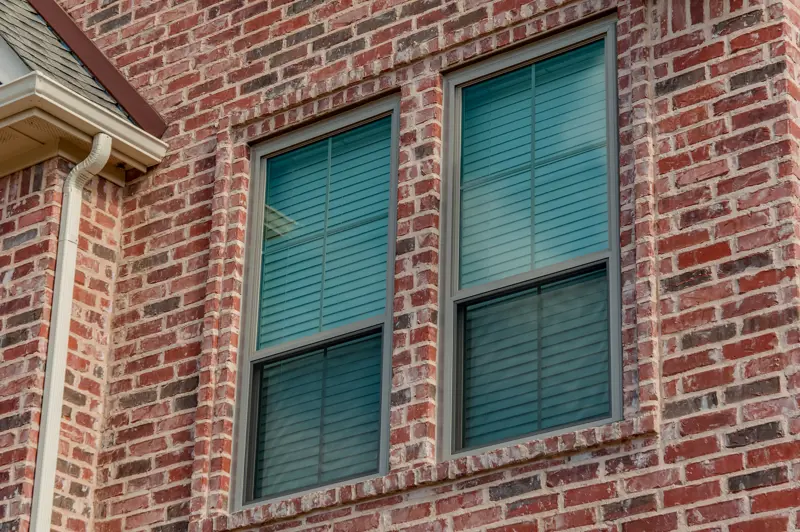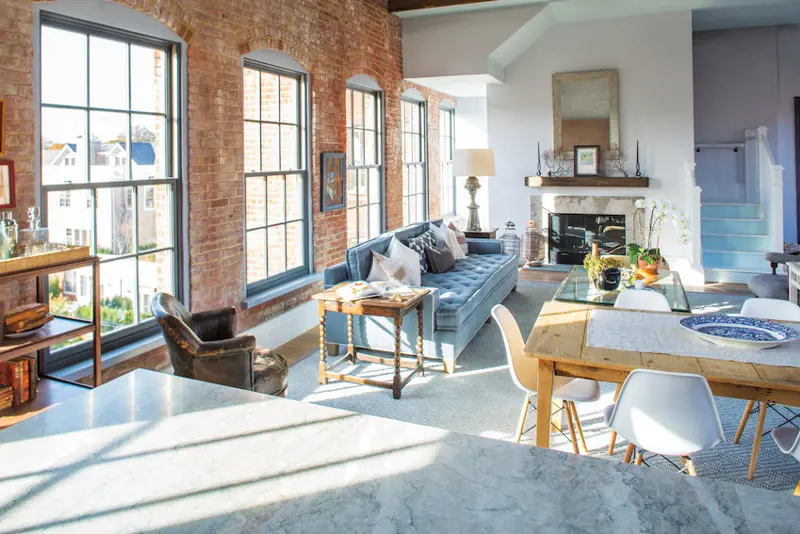
Vinyl vs Fiberglass Windows
The first vinyl windows were manufactured in the 1950s, but it wasn't until the 90s that they really caught on. Fiberglass has been around even longer—it's been used to make everything from insulation to canoes—but fiberglass windows have really only begun to become popular since the year 2000.
Today, vinyl is the most widely used material for window frames and sashes in the United States. Vinyl is affordable, widely available and fairly easy to install. But fiberglass windows are gaining ground thanks to their curb appeal, durability and energy efficiency.
Vinyl vs Fiberglass Windows
When choosing replacement windows, it's important to consider not only the size and style of windows that work best for your home, but also the material the windows are made out of. Vinyl and fiberglass windows differ in a variety of ways.
Use the links below to skip ahead:
- Construction: How are Vinyl and Fiberglass Windows Made?
- Aesthetics/curb appeal: How do Vinyl and Fiberglass Windows Look?
- Durability: Are Vinyl and Fiberglass Windows Durable?
- Maintenance: Are Vinyl and Fiberglass Windows High-Maintenance?
- Energy Efficiency: Are Vinyl and Fiberglass Windows Energy Efficient?
- Cost: Are Vinyl and Fiberglass Windows Expensive?
- Availability: Are Wood and Fiberglass Windows Expensive?
- What are the Pros and Cons of Vinyl Windows
- What are the Pros and Cons of Fiberglass Windows
Construction
Vinyl window frames and sashes are made of polyvinyl chloride (PVC) which is a type of plastic material that is both flexible and durable. In many cases, vinyl windows have an internal structure made of metal to give them extra strength and rigidity.
Fiberglass is made through a process called pultrusion, in which polyester resins are pulled through a heated die, and impregnated into strands or mats of glass. The result is an amalgam of glass fibers and plastic, which can be cut or molded into the necessary shape for window frames. In addition to all-fiberglass windows, there are also fiberglass-clad wood windows.
Both vinyl and fiberglass are technically composites because they are made from a blend of materials.
Aesthetics/curb appeal
At a distance, vinyl and fiberglass windows look similar. But fiberglass window frames tend to be narrower, which creates greater glass surface area and allows more natural light to enter your home. This also makes fiberglass windows well suited to modern styles of architecture. Vinyl has what you might call a more "classic" window look though some manufacturers are introducing vinyl windows in more narrow frames to meet consumer demand.
Both vinyl and fiberglass come in a fairly limited range of baked-in colors. Some fiberglass windows are textured to resemble the grain of natural wood. One downside of fiberglass windows is that their colors may fade in direct sunlight.
Durability
Compared to traditional wood windows, vinyl and fiberglass are both more durable options. That being said, fiberglass is the more durable of the two. It's also stronger, which is why fiberglass window frames tend to be thinner.
As a general rule, you can expect to get about 30 years out of good vinyl windows, while fiberglass windows can still be in good shape 50 years or more after installation. Vinyl and fiberglass can vary in quality from manufacturer to manufacturer so it's important to remember that you get what you pay for. Cheap vinyl windows can experience some warping in extreme heat and they expand and contract more than other window materials. Fiberglass on the other hand expands and contracts at the same rate as the glass making it a nonissue. Do your research before choosing a window and ask your window retailer/dealer how your new windows will withstand your local climate.
Maintenance
Vinyl and fiberglass are both considered to be very low-maintenance window options, especially compared to traditional wood windows. Both are impervious to rot and pests, and cleaning them is as simple as scrubbing off dirt, and mildew with a sponge and some warm water.
The only situation in which fiberglass has a leg up over vinyl, in terms of maintenance, is if you decide to paint your windows. Paint doesn't adhere as well to vinyl. It's prone to chipping and flaking, and will need to be repainted more frequently. If you want a non-traditional color on your new windows, ask about factory-finished painting options before taking on a DIY paint job.
Energy Efficiency
Fiberglass was originally invented for insulation, so it should come as no surprise that fiberglass windows are more energy efficient than vinyl windows (up to 15% more energy efficient, as a general rule of thumb). This stems largely from the fact that, unlike vinyl, the fibers that make up a fiberglass window frame don't contract in the cold.
Even so, vinyl windows can also be quite efficient. A number of factors other than frame material also contribute to energy efficiency, including the style of window, the number of panes, and the quality of installation. It's always recommended that you have your windows installed by a professional for maximum energy efficiency.
Don't overpay for energy efficient glass packages on your windows. Yes, glass is the biggest surface on your windows and the least energy efficient but look at ENERGY STAR's performance rating recommendations before making your decision. As long as you meet ENERGY STAR's criteria for your climate zone you'll be in good shape.
Cost
Cost is one area in which vinyl does have an advantage over fiberglass. Vinyl windows are considerably less expensive than fiberglass, at least in terms of upfront cost. According to Remodeling's 2020 Cost vs. Value Report, the national average cost of a vinyl window replacement project is $17,641 (10 windows). Fiberglass windows are actually closer in cost to wood windows. Remodeling's report shows the national average cost for wood window replacement projects is $21,495.
In the long run, the costs of these two window styles are a little more difficult to compute. You can save on heating and cooling with vinyl windows because they are more efficient, and it's also work bearing in mind that they won't have to be replaced as soon. Fiberglass can also have a positive impact on home resale value, should you ever choose to sell your house.
Availability
Vinyl windows are considerably more widely available than fiberglass windows, and just about every major manufacturer makes them. Fiberglass windows are considered more of a premium option, and while they aren't as widely available as vinyl, they are starting to catch on more and more. Some of the top vinyl and fiberglass window brands include:
- NT Window - vinyl
- Alside - vinyl
- Marvin Windows - fiberglass
- Andersen Windows & Doors - fiberglass cladded wood
Pros and Cons of Vinyl Windows
- Inexpensive
- Widely available
- Doesn't require painting
- Low maintenance
- Easy to install
- Lasts up to 30 years
- Limited color options
- Can warp in heat
- Only moderately energy efficient
- Doesn't last as long as fiberglass
Pros and Cons of Fiberglass Windows
- Very strong and durable
- Thinner frames mean more glass area and better light
- Better insulating frame
- Doesn't expand, contract or warp
- Low maintenance
- Lasts 50 years or more
- More expensive than vinyl
- Not as widely available
- Colors my fade in direct sunlight
At the end of the day, the choice between vinyl vs fiberglass windows comes down to your own personal needs and wants, as well as your budget. Contact our team at Brennan Enterprises today to learn more about finding the perfect replacement windows for your home!
Oops!
We don't currently serve your area but do want to help you plan your project. Try our Build & Price tool to get an idea of window & door costs within DFW. Your area may be higher or lower but at least you'll have some idea of the price.
Thanks for stopping by.







